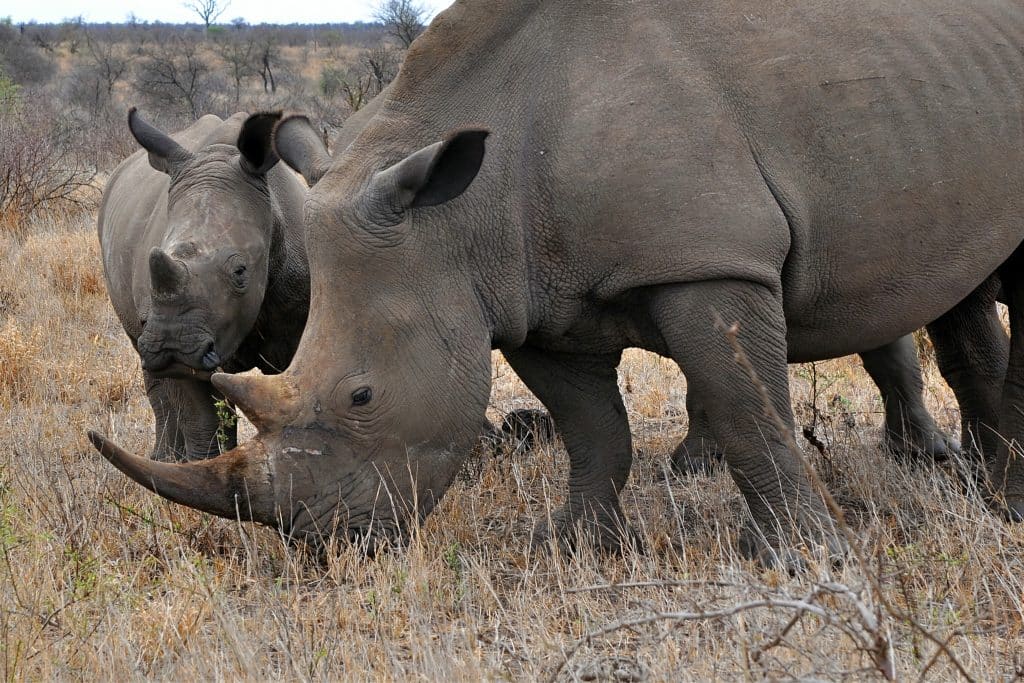Poaching and illegal trade in rhinos remain a concern in Africa. According to a report published on 22 August 2022 by the International Union for Conservation of Nature (IUCN), from 2018 to 2021, 2,707 rhinos were poached across the African continent, 90% of them in South Africa.
While there has been an easing of human pressure on rhino, including the rest of the wildlife due to restrictions imposed by the Covid-19 pandemic, trafficking resumed just after the restrictions were lifted in 2021. As a result, poaching has increased again in some countries, notably South Africa, where 451 rhinos were illegally killed compared to 394 in 2020. Overall, the African rhino population has declined by about 1.6% per year, from an estimated 23,562 individuals in 2018 to 22,137 at the end of 2021.
Still a relative decline
These African rhino poaching figures are still significantly lower than the peak in 2015, when South Africa alone lost 1,175 rhinos to poaching. The continent’s rhino poaching rate then reached 5.3%, a far cry from the 3.9% in 2018 and 2.3% in 2021.
Sam Ferreira, IUCN’s African rhino specialist, explains this downward trend by a combination of factors. “These include improved local law enforcement cooperation, international collaboration between states (…) and a reduction in demand for rhino horn,” he says.
For Traffic, the wildlife trade monitoring network, vigilance must continue. “Continuous and consistent monitoring of the illegal trade is vital,” says Sabri Zain, Traffic’s policy director. He stresses the need for greater sharing of critical information such as DNA samples between countries affected by the illegal trade in rhino specimens.
Read also-SOUTH AFRICA: The World Bank issues its first Rhino Bond for black rhinos
The IUCN report comes on the eve of the 19th meeting of the International Conference on Endangered Species (CITES). The event, which takes place in November 2022 in Panama City, will be the ideal setting for discussions on the protection of the African rhino.
Boris Ngounou
